Hyundai i10 vs smart #1 – Which one offers the better deal?
Everyday use, family trips or long-distance drives – here’s where the differences show.
Discover whether Hyundai i10 or smart #1 fits your lifestyle better.
Costs and Efficiency:
Looking at overall running costs, both models reveal some interesting differences in everyday economy.
Hyundai i10 has a convincingly advantage in terms of price – it starts at 14600 £, while the smart #1 costs 31700 £. That’s a price difference of around 17143 £.
Engine and Performance:
Power, torque and acceleration say a lot about how a car feels on the road. This is where you see which model delivers more driving dynamics.
When it comes to engine power, the smart #1 has a decisively edge – offering 428 HP compared to 90 HP. That’s roughly 338 HP more horsepower.
In acceleration from 0 to 100 km/h, the smart #1 is clearly quicker – completing the sprint in 3.90 s, while the Hyundai i10 takes 11.40 s. That’s about 7.50 s faster.
In terms of top speed, the smart #1 performs slight better – reaching 180 km/h, while the Hyundai i10 tops out at 175 km/h. The difference is around 5 km/h.
There’s also a difference in torque: smart #1 pulls clearly stronger with 584 Nm compared to 172 Nm. That’s about 412 Nm difference.
Space and Everyday Use:
Cabin size, boot volume and payload all play a role in everyday practicality. Here, comfort and flexibility make the difference.
Both vehicles offer seating for 5 people.
In curb weight, Hyundai i10 is convincingly lighter – 996 kg compared to 1780 kg. The difference is around 784 kg.
In terms of boot space, the smart #1 offers distinct more room – 323 L compared to 252 L. That’s a difference of about 71 L.
In maximum load capacity, the Hyundai i10 performs slight better – up to 1050 L, which is about 64 L more than the smart #1.
When it comes to payload, smart #1 barely noticeable takes the win – 470 kg compared to 423 kg. That’s a difference of about 47 kg.
Who wins the race?
The smart #1 proves to be is largely superior and therefore becomes our DriveDuel Champion!
smart #1 is the better all-rounder in this comparison.

smart #1
Hyundai i10
The Hyundai i10 impresses with its compact design, making it an ideal choice for navigating through busy urban environments. Its interior is surprisingly spacious, offering drivers and passengers comfort beyond what one might expect from a city car. The model combines efficiency and practicality, making it an attractive option for those seeking both economy and functionality in their daily commute.
details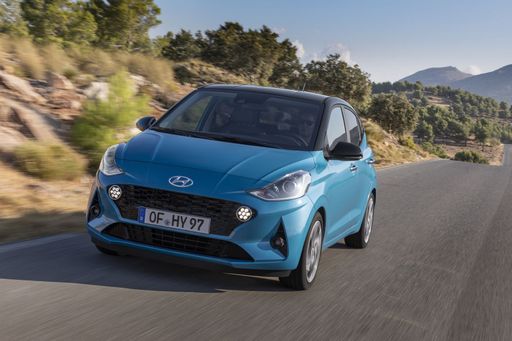 @ hyundai.news
@ hyundai.news
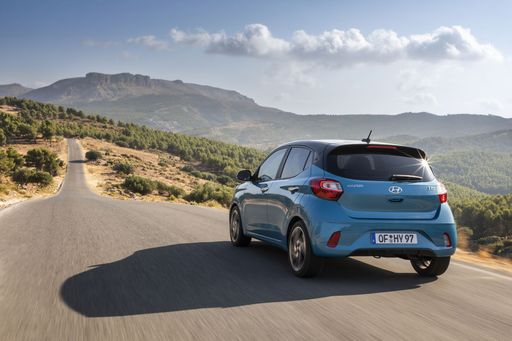 @ hyundai.news
@ hyundai.news
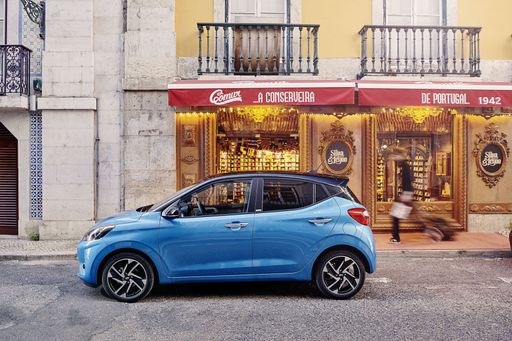 @ hyundai.news
@ hyundai.news
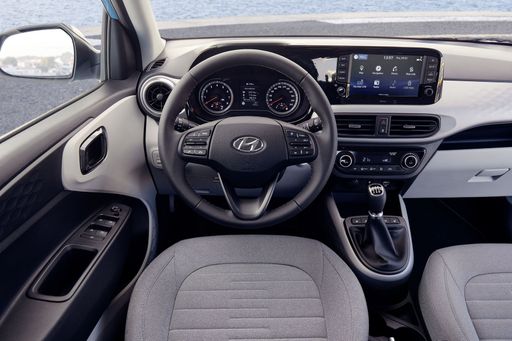 @ hyundai.news
@ hyundai.news
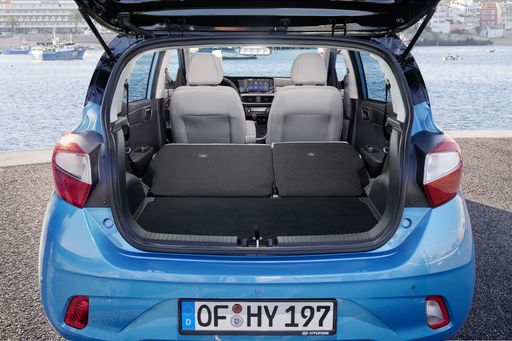 @ hyundai.news
@ hyundai.news
smart #1
The smart #1 marks a significant evolution in design philosophy, merging urban practicality with modern aesthetics. Its compact size belies a spacious interior, crafted to offer a comfortable and connected driving experience. With its focus on eco-friendly motoring, the smart #1 is set to charm city dwellers seeking both efficiency and style.
details @ Smart Deutschland
@ Smart Deutschland
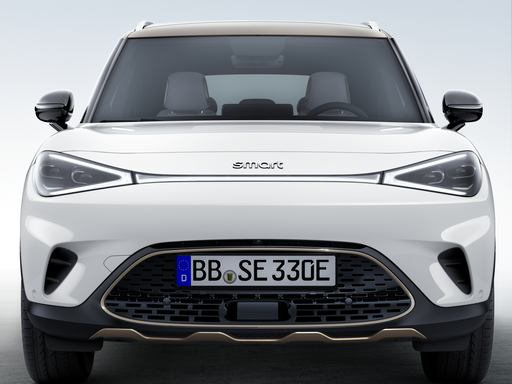 @ Smart Deutschland
@ Smart Deutschland
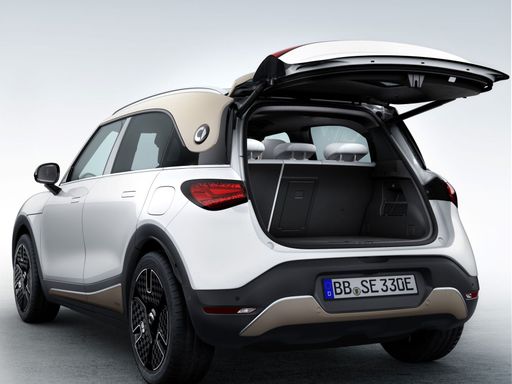 @ Smart Deutschland
@ Smart Deutschland
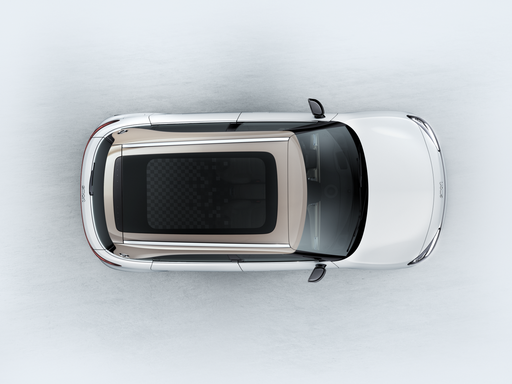 @ Smart Deutschland
@ Smart Deutschland
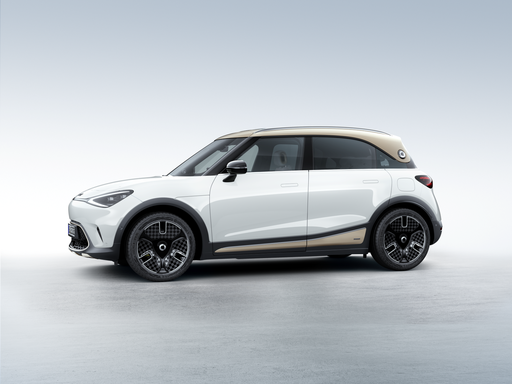 @ Smart Deutschland
@ Smart Deutschland
 @ Smart Deutschland
@ Smart Deutschland
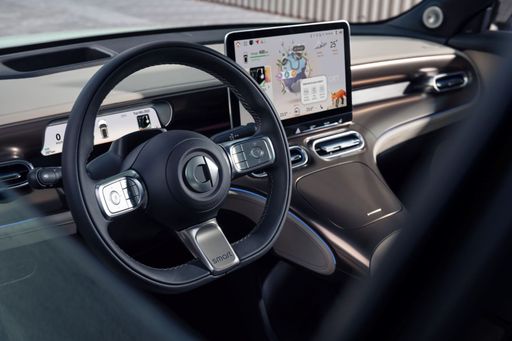 @ Smart Deutschland
@ Smart Deutschland

|

|
|
|
|
Costs and Consumption |
|
|---|---|
|
Price
14600 - 19000 £
|
Price
31700 - 45000 £
|
|
Consumption L/100km
4.9 - 5.5 L
|
Consumption L/100km
-
|
|
Consumption kWh/100km
-
|
Consumption kWh/100km
16.8 - 18.2 kWh
|
|
Electric Range
-
|
Electric Range
310 - 440 km
|
|
Battery Capacity
-
|
Battery Capacity
47 - 62 kWh
|
|
co2
110 - 124 g/km
|
co2
0 g/km
|
|
Fuel tank capacity
36 L
|
Fuel tank capacity
-
|
Dimensions and Body |
|
|---|---|
|
Body Type
Hatchback
|
Body Type
SUV
|
|
Seats
4 - 5
|
Seats
5
|
|
Doors
5
|
Doors
5
|
|
Curb weight
996 - 1099 kg
|
Curb weight
1780 - 1900 kg
|
|
Trunk capacity
252 L
|
Trunk capacity
313 - 323 L
|
|
Length
3670 - 3675 mm
|
Length
4270 - 4300 mm
|
|
Width
1680 mm
|
Width
1822 mm
|
|
Height
1480 - 1483 mm
|
Height
1636 mm
|
|
Max trunk capacity
1050 L
|
Max trunk capacity
976 - 986 L
|
|
Payload
344 - 423 kg
|
Payload
425 - 470 kg
|
Engine and Performance |
|
|---|---|
|
Engine Type
Petrol
|
Engine Type
Electric
|
|
Transmission
Manuel, Automatic
|
Transmission
Automatic
|
|
Transmission Detail
Manual Gearbox, Automated Manual
|
Transmission Detail
Reduction Gearbox
|
|
Drive Type
Front-Wheel Drive
|
Drive Type
Rear-Wheel Drive, All-Wheel Drive
|
|
Power HP
63 - 90 HP
|
Power HP
272 - 428 HP
|
|
Acceleration 0-100km/h
11.4 - 18.4 s
|
Acceleration 0-100km/h
3.9 - 6.7 s
|
|
Max Speed
143 - 175 km/h
|
Max Speed
180 km/h
|
|
Torque
93 - 172 Nm
|
Torque
343 - 584 Nm
|
|
Number of Cylinders
3 - 4
|
Number of Cylinders
-
|
|
Power kW
46 - 66 kW
|
Power kW
200 - 315 kW
|
|
Engine capacity
998 - 1197 cm3
|
Engine capacity
-
|
General |
|
|---|---|
|
Model Year
2024
|
Model Year
2023 - 2024
|
|
CO2 Efficiency Class
C, D
|
CO2 Efficiency Class
A
|
|
Brand
Hyundai
|
Brand
smart
|
Is the Hyundai i10 offered with different drivetrains?
The Hyundai i10 is offered with Front-Wheel Drive.
The prices and data displayed are estimates based on German list prices and may vary by country. This information is not legally binding.
